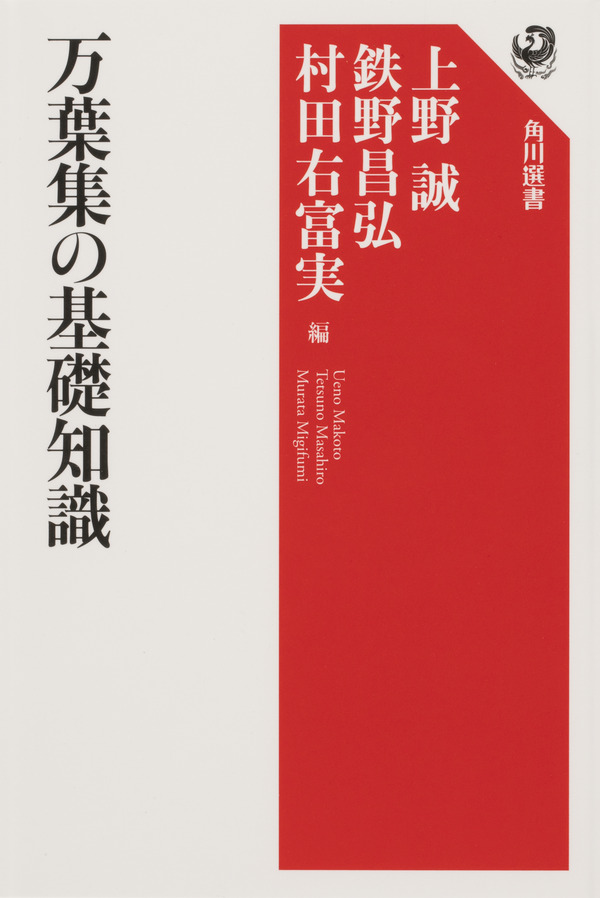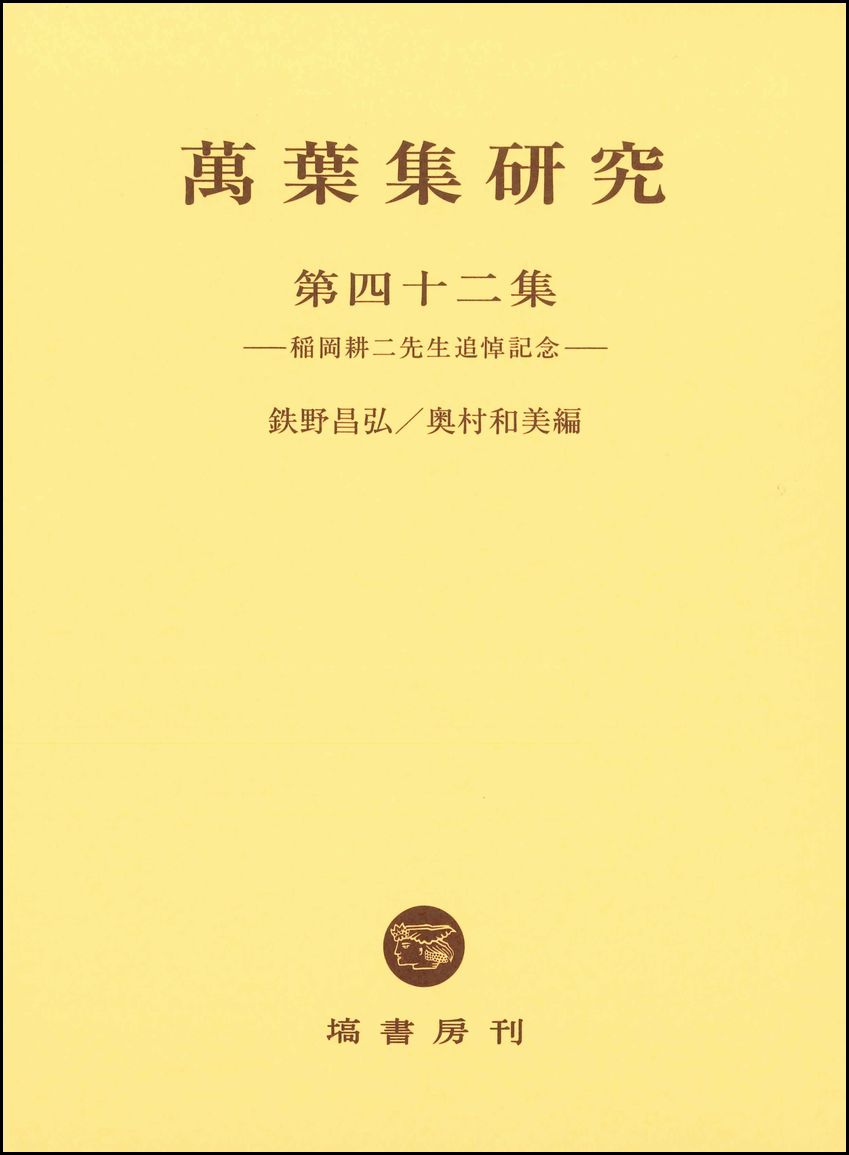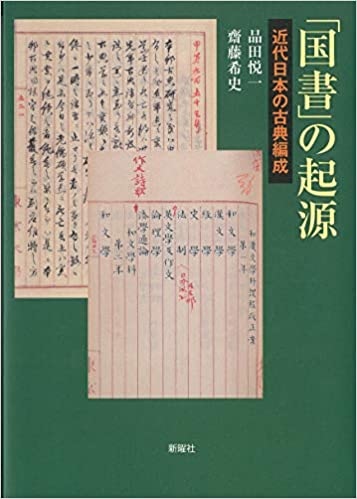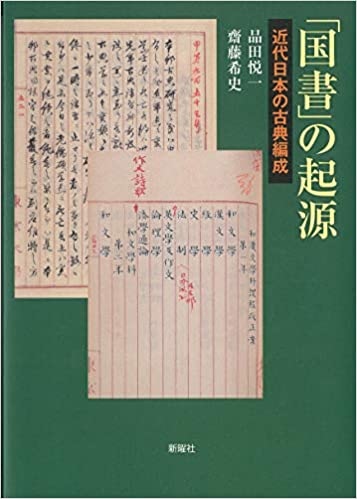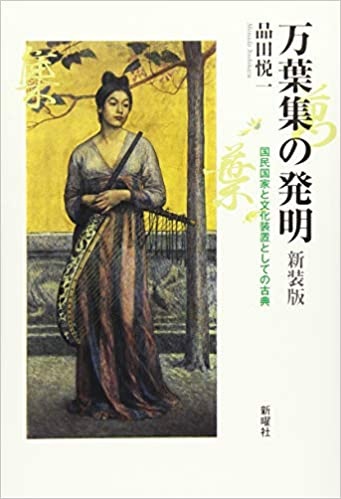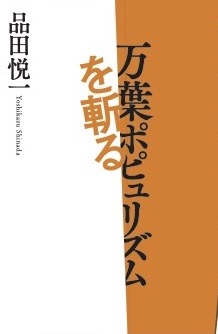
Title
Man’yō populism o kiru (Lambasting Man’yō Populism)
Size
218 pages, 127x188mm
Language
Japanese
Released
October 07, 2020
ISBN
978-4-06-520927-1
Published by
Tanka Kenkyu-sha / Kodansha
Book Info
See Book Availability at Library
Japanese Page
The announcement of “Reiwa” as the new era name based on the Man’yōshū was greeted with a celebratory mood. The LDP administration was using the Man’yōshū to their own ends to deceive the people of the nation, and there was no attempt by the mass media to engage in direct criticism. I could not stand by and watch. Based on forty years of Man’yōshū research, I had to sound the alarm, and I put this book together in great haste.
On the night of April 1, the day of the Prime Minister’s press conference announcing the new era name, I wrote an article and submitted it to the newspaper. It spread via social media, where it garnered a reputation. This article forms the basis of Chapter 1, supplemented with material from another article I published in the journal Tanka kenkyū. I demonstrate that the plum-blossom viewing banquet hosted in Tenpyō 2 (730 CE) by Ōtomo no Tabito (665-731) was a cultural protest of an incident that had occurred in the previous year, when the Minister of the Left, Prince Nagaya (??-729), had been put to death on false charges. I also engage in a thorough reading of the original text of the “Preface to Poems Composed at a Plum-blossom Viewing,” the text from which the name “Reiwa” was taken, and reveal that its message, “tyranny by the powerful cannot be permitted, nor shall it be forgotten,” was a thunderclap to those in power at the time.
Chapter 2 is based on content I used for “Friday Lectures for High School Students” at the University of Tokyo, Komaba Campus. The common knowledge that the Man’yōshū is a collection of poems that are “simple, bold, and frank” by everyone “from emperors to commoners” is a fantasy that was artificially created in the late 1880s and 1890s. The purpose of this fantasy was to ferment a widespread notion of belonging to the nation-state, and in this chapter, I outline the role carried out by the Man’yōshū in modern Japan.
Chapter 3 is a based on a lecture that revises the contents of Chapter 1 in more detail. It addresses two works upon which the “Preface to Poems Composed at a Plum-blossom Viewing” was based, Zhang Heng’s (78-139 CE) rhapsody Return to the Field (Gui tian fu) and Preface to the Poems Collected from the Orchid Pavilion (Lantingji Xu). While reading their intertextual exchange more deeply, I illustrate that tacit critique of the Prince Nagaya Incident is incorporated into the Man’yōshū at every turn.
Chapter 4 is also taken from a lecture. I demonstrate, using a variety of evidence, that the common knowledge that the Man’yōshū contains poems from “not only the emperor, imperial family, and aristocrats, but border guards and famers, people from a broad range of social strata” does not hold up. As a concrete example, I bring up the “Songs of the East,” which have been taken to be representative of poems by farmers. I argue that the social class of the composers of these poems was in fact local elites. The structure of the poems’ rhythm perfectly matches the poetic form that was established at the imperial court as the poetic form for standardized short-form poems (tanka). The compositions incorporate natural scenery as seen from daily touring by horse, an expensive animal that commoners at the time would not have been able to afford. Finally, the expressions for placenames are based on ways of thinking that are conscious of people in the capital.
In Chapter 4, I also point out that the Meiji (1868-1912) state changed the name of the device used for chronicling years. Under the Civil and Penal Codes used in the era of the Man’yōshū, this device was referred to as an “era name” (nengō), but this was changed in 1868 into a “name for an imperial era” (gengō). This treatment is in keeping with the spirit of a “Greater Japanese Empire ruled by the heavenly sovereign of an unbreakable imperial line” as given in Article 1 of the Constitution of the Empire of Japan (1890-1947), but does not accord with the spirit of the Constitution of Japan (1947-present), which is based on a symbolic emperor system.
(Written by SHINADA Yoshikazu, Professor, Graduate School of Arts and Sciences / 2021)
Table of Contents
Personal Statement, in lieu of preface
Chapter 1: The Message from Ōtomo no Tabito that Emerges from “Reiwa” (earliest publication)
Chapter 2: How has the Man’yōshū been read up to now? How will it be read from now on?
Chapter 3: The Message from Ōtomo no Tabito that Emerges from “Reiwa” (easy to understand commentary)
Chapter 4: Era Name Changes and Man’yō Populism
In lieu of afterword



 Find a book
Find a book


